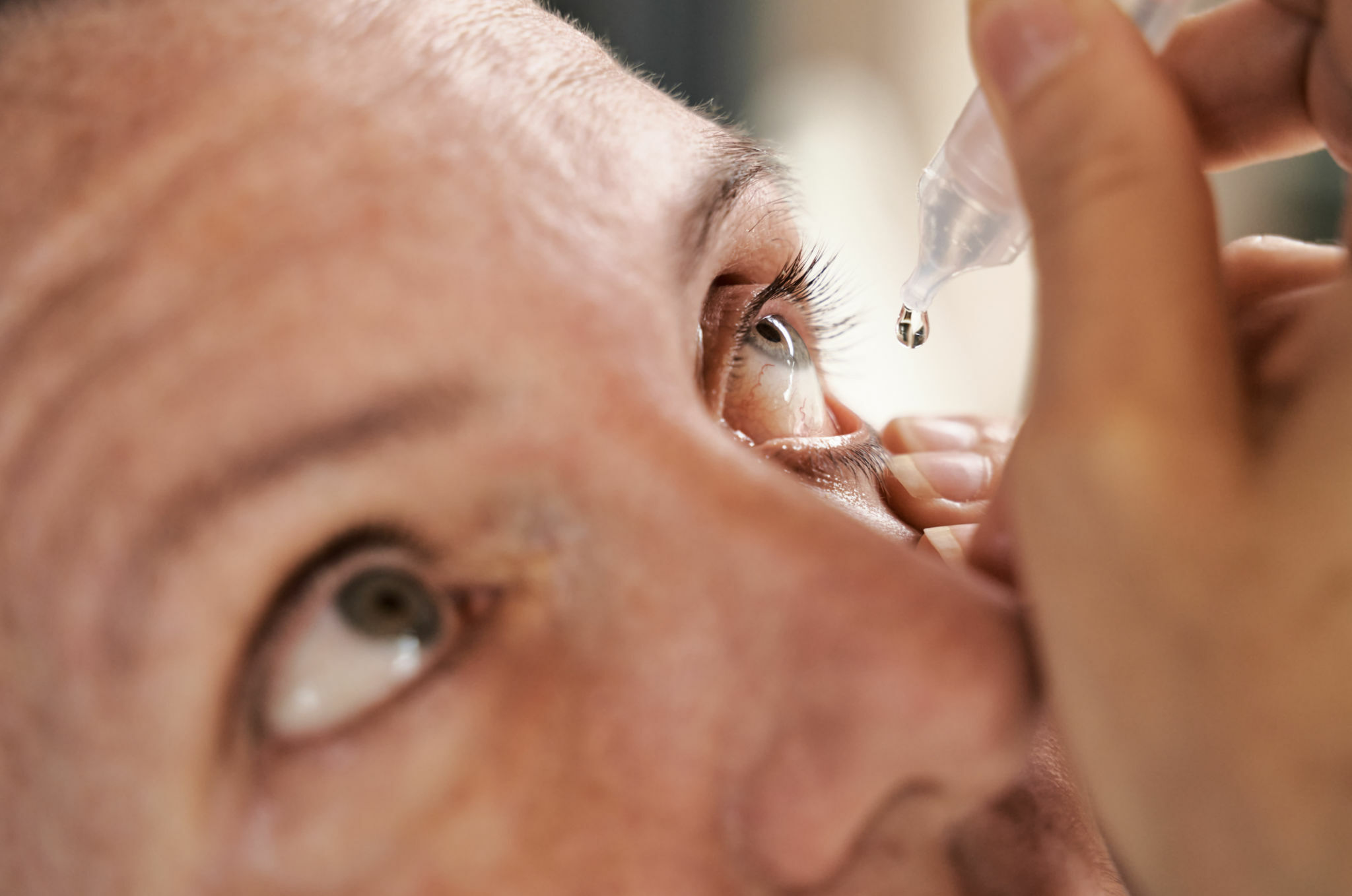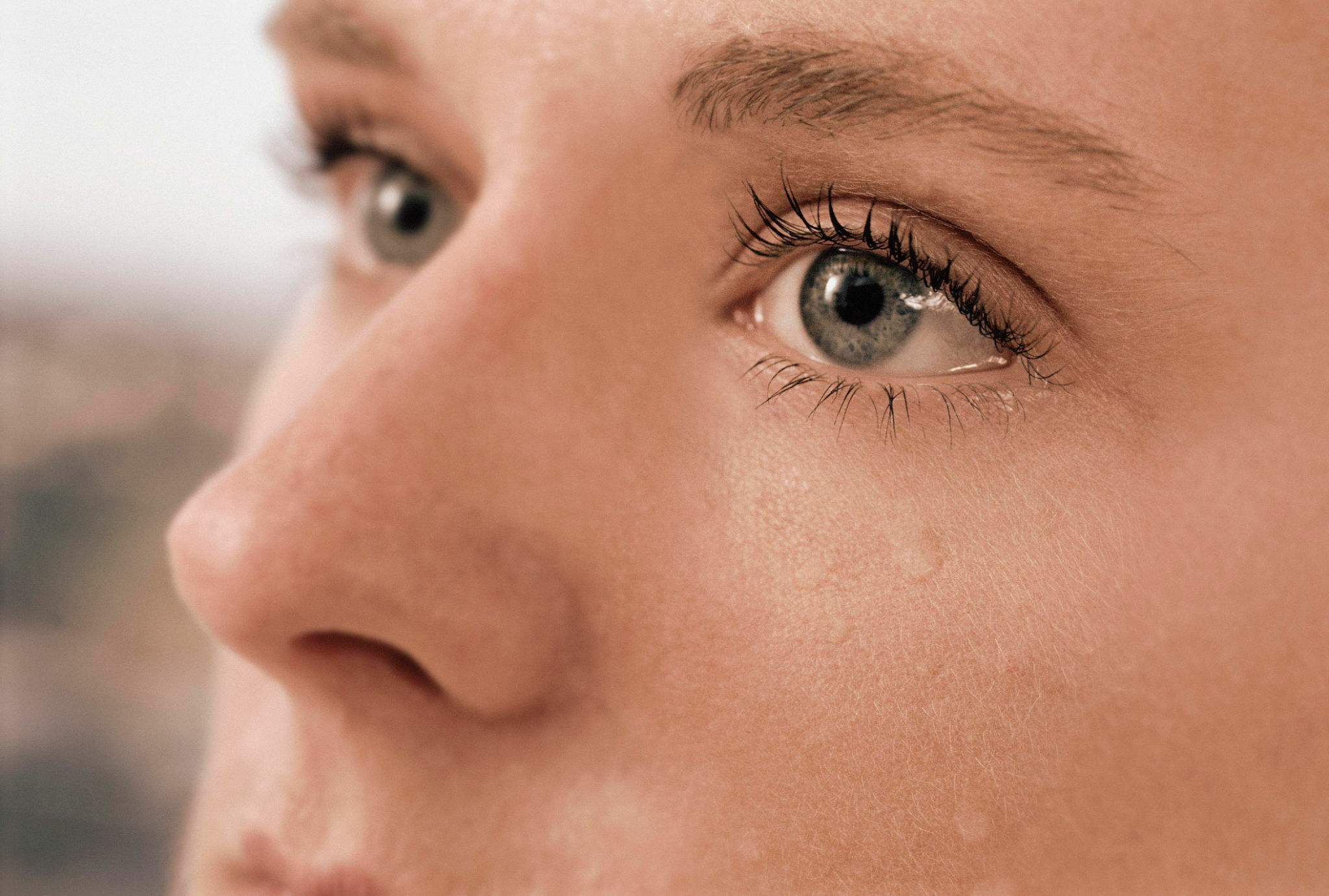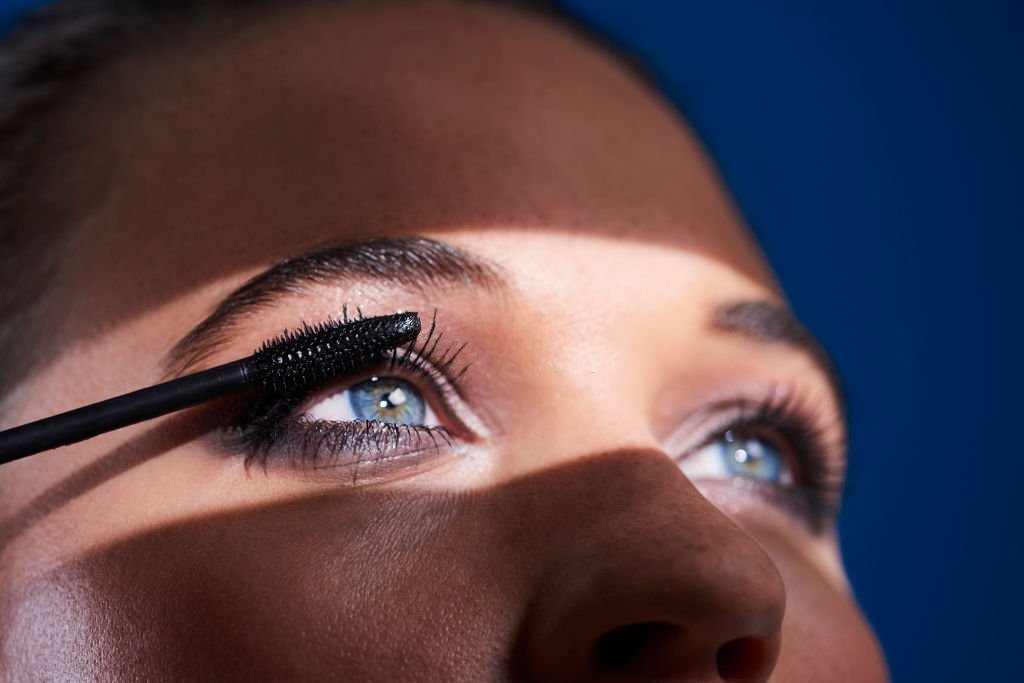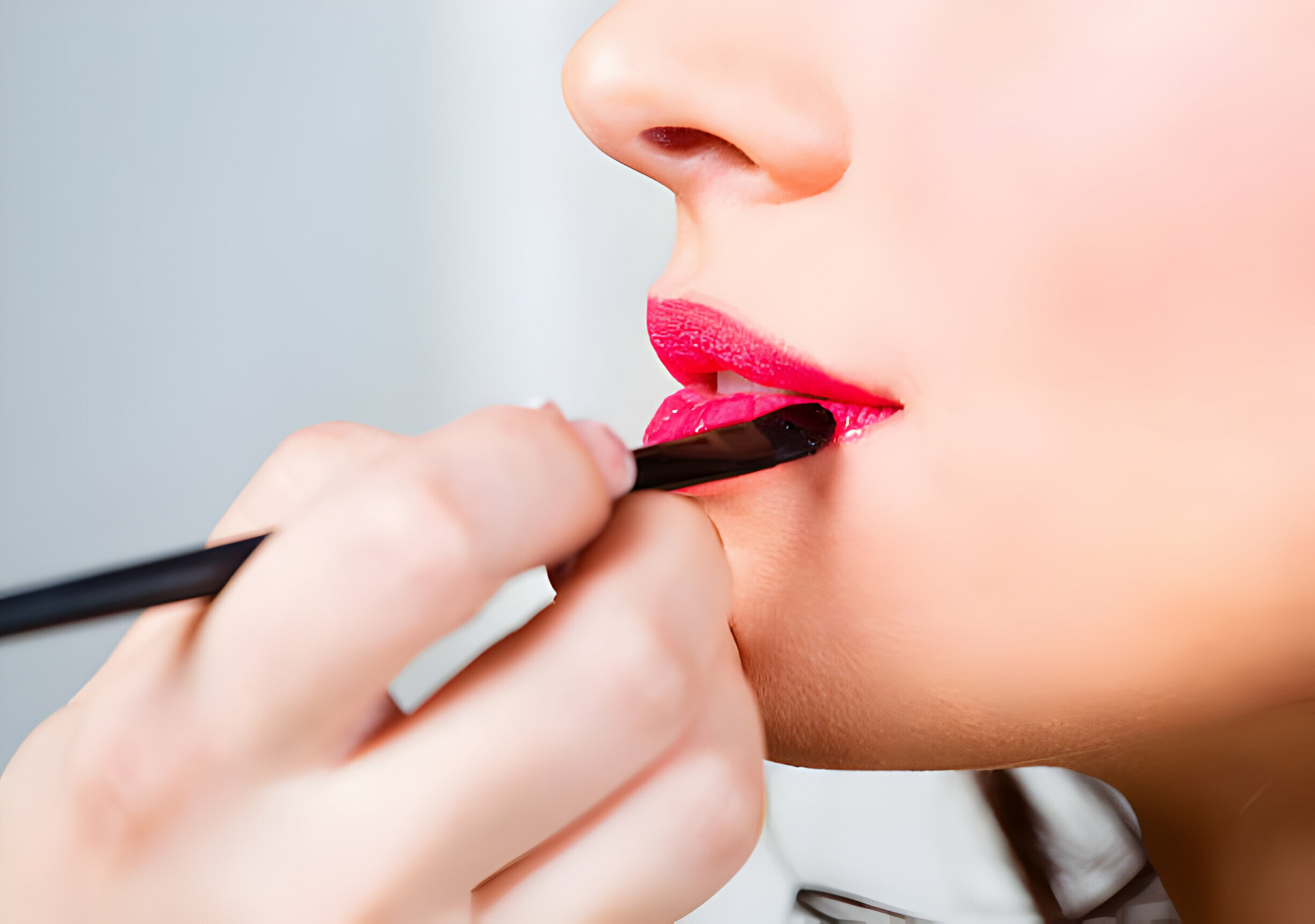How To Stop Watery Eyes At Home?
Watery eyes, or epiphora, are common conditions where excess tears overflow onto your cheeks. It can affect one or both eyes; while it’s often temporary, chronic watery eyes can be bothersome.
The overproduction of tears or inadequate drainage of tears causes watery eyes. The excess fluid spills out, making your eyes look constantly wet.
Finding ways to manage watery eyes at home is important because the condition can interfere with daily activities and be socially embarrassing. Thankfully, there are many effective home remedies and over-the-counter treatments.
This article will provide an overview of the common causes of watery eyes and home treatments you can try to find relief. We’ll discuss techniques like warm compresses, eye drops, gentle eyelid scrubbing, and lifestyle changes. You’ll also learn when to call your eye doctor about watery eye symptoms.
Causes of Watery Eyes
Watery eyes can be caused by a variety of factors, including:
Allergies
Allergic reactions to substances like pollen, pet dander, dust mites, and mold can cause the eyes to become irritated and watery. The body releases histamines as part of the allergic response, stimulating tear production. Allergy-related watery eyes tend to come and go depending on exposure to the allergen. They may be accompanied by symptoms like itchy eyes, sneezing, and nasal congestion.
Blepharitis
Blepharitis is chronic inflammation along the edges of the eyelids. Oil glands near the base of the eyelashes become clogged, leading to irritation, redness, burning, and excessive tearing. Blepharitis is often persistent and difficult to treat fully. Proper eyelid hygiene is important for managing this condition.
Blocked Tear Ducts
Tears drain from the eyes into the nose through small ducts or channels. When these tear ducts become blocked, perhaps due to injury, infection, or a structural problem, tears cannot drain normally and may overflow from the eyes. A blocked tear duct is commonly treated with surgery to open the duct.
Environmental Factors
Environmental irritants like wind, cold temperatures, cigarette smoke, air pollution, and chlorinated water can aggravate the eyes and stimulate reflexive tearing. Watery eyes from environmental factors tend to occur while exposed and improve once the irritant source is removed.
Dry Eyes
Although it may seem counterintuitive, dry eyes can also cause watery eyes. When the eyes lack sufficient lubrication, the lacrimal glands work harder to produce tears and maintain moisture. The excess tearing is the body’s response to irritated, dry eyes. Treatment involves artificial tears, humidifiers, warm compresses, and limiting screen time.
How To Stop Watery Eyes At Home?

Several effective at-home remedies can provide relief for watery eyes. The most common and accessible home treatments include:
Warm Compress Therapy
One of the easiest at-home remedies for watery eyes is warm compress therapy. This involves applying a warm, wet washcloth over your closed eyelids to help stimulate oil production in the eyelid glands.
Directions
To perform warm compress therapy:
- Soak a clean washcloth in warm water. Be sure the water is at a comfortable temperature, not too hot.
- Gently wring out excess water so the cloth is not dripping wet.
- Lie down or sit with your head tilted back. Carefully place the warm, wet cloth over your closed eyelids.
- Leave the warm compress on for 5-10 minutes, rewarming the cloth as needed.
- Repeat 2-4 times daily.
Benefits
Warm compresses offer several benefits for relieving watery eyes:
- The heat helps stimulate oil glands in the eyelids, preventing dryness.
- Increased oil production can help block tear drainage.
- The moisture improves the lubrication of the eyes.
- It can help loosen and clear oil blockages in the tear ducts.
Frequency and Duration
Experts typically recommend doing warm compresses for 5-10 minutes, 2-4 times daily. This routine can be continued for several days or weeks to fully clear watery eye symptoms. Be sure to rewarm the washcloth when it cools to maintain a constant temperature over the eyelids. Consistency is key to getting the full benefits.
Artificial Tears
Artificial tears are lubricating eye drops that can relieve watery eyes caused by dryness or irritation. They supplement the eyes’ natural tear film and lubricate the eye’s surface.
There are different types of artificial tear eye drops:
-
Aqueous drops contain water and electrolytes and mimic the eyes’ natural tears. They provide quick, temporary relief.
-
Ointment drops are thicker and more dense, providing longer-lasting lubrication. They are often recommended for nighttime use.
-
Oil-based emulsions combine oil and water to coat the eyes.
-
Hypromellose drops contain a cellulose-derived polymer that adheres to the eye longer.
-
Polyethylene glycol drops use large molecules to help retain moisture.
-
Liposome sprays contain phospholipids that integrate into the tear film.
Tilt your head and administer the drops inside the lower eyelid when applying artificial tears. Try to avoid touching the dropper to your eye to prevent contamination. Blink several times after application to spread the drops. Use drops as needed, up to 4-6 times per day.
Potential side effects are usually mild but can include blurry vision, eye redness, eye stinging, or irritation. Discontinue use if any severe reactions occur. As with any over-the-counter medication, consult a doctor if you have any concerns.
Antihistamines
Antihistamines can help relieve watery eyes caused by allergies. They block histamine, the chemical the body releases during an allergic reaction. Histamine is responsible for many allergy symptoms like itchy, watery eyes.
Over-the-counter antihistamine eye drops like Ketotifen fumarate can provide targeted relief by reducing eye itchiness and irritation. Oral antihistamines like loratadine or cetirizine, which come in tablet form, can also help if taken daily. Always check the label for proper dosage information based on age.
The active ingredients in antihistamine eye drops and oral medications are generally the same. OTC options contain non-drowsy formulas like:
- Azelastine
- Emedastine
- Ketotifen fumarate
- Olopatadine
The most common side effect of antihistamines is drowsiness in some people, especially with older first-generation options like diphenhydramine. Newer second-generation antihistamines are less likely to cause sedation. Headaches, dry mouth, and fatigue can also occur. Use the minimum effective dose and monitor for any reactions. Talk to a doctor before using antihistamines if pregnant or breastfeeding.
Proper Eye Hygiene
Keeping the area around your eyes clean can help prevent and alleviate watery eyes caused by irritants or blocked tear ducts. Here are some tips for proper eye hygiene:
-
Clean your eyelids – Use a clean, damp washcloth or a moist cotton pad to wipe your eyelids gently. This will remove any crust, debris, or allergens that are irritating. Be very gentle, and don’t scrub.
-
Wash around your eyes – Use a mild, fragrance-free cleanser and lukewarm water when washing your face. Avoid getting cleanser directly in your eyes. Rinse thoroughly with clean water to remove all traces of cleanser.
-
Avoid eye irritants – Avoid soap, facial scrubs, or any products containing alcohol or fragrances around your eyes, as these can further aggravate watery eyes. Look for products labeled “ophthalmologist tested” or “for sensitive eyes.”
-
Blink frequently – Blinking spreads tears across the eye’s surface, keeping it moist. Try to blink more often if you spend much time staring at screens.
-
Use proper eye makeup removal – Always remove eye makeup thoroughly before bedtime. Use a dedicated eye makeup remover rather than harsh soaps or oils. Never sleep with makeup on.
Basic eye hygiene habits can help prevent eye irritations that lead to excess watering. Be gentle, keep the area clean, and avoid rubbing your eyes. See an eye doctor if symptoms persist despite good hygiene.
Herbal Treatments for Watery Eyes
Herbal remedies derived from plants and flowers have been used for centuries to treat various eye conditions. Several herbal treatments may help relieve symptoms of watery eyes when applied topically or taken orally.
Chamomile
Chamomile is an herb that contains anti-inflammatory and antibacterial properties. It is commonly used in the form of chamomile tea bags or essential oils. To use chamomile for watery eyes, steep a chamomile tea bag in hot water for 3-5 minutes. Allow it to cool, and apply the tea bag over the closed eye for 5-10 minutes. Repeat 2-3 times per day. The soothing compounds in chamomile can help reduce eye inflammation and irritation.
Blueberry
Blueberries are packed with antioxidants and anti-inflammatory phytochemicals. Blueberry extracts can be applied as eye drops to help relieve dryness and irritation. Look for eye drops that contain blueberry extract and follow the dosage instructions on the bottle. Research shows blueberry antioxidants may help improve tear film stability and ocular surface health.
Eyebright
Eyebright is an herb traditionally used to treat eye inflammation, styes, and conjunctivitis. Eyebright tea can be prepared by steeping 1-2 teaspoons of the dried herb in 8 ounces of boiling water for 10 minutes. Allow it to cool, and then use it as an eye wash 2-3 times daily. Eyebright contains anti-inflammatory and astringent properties that can help soothe the eyes. Some early research shows eyebright extracts may improve tear production and eye secretions.
Staying Hydrated
Proper hydration is crucial for eye health. When the body is dehydrated, it reduces blood flow and tears, which help keep the eyes lubricated. Dehydration can lead to irritation, dryness, and watery eyes.
Drinking at least 64 ounces (8 cups) of water daily is recommended. Increase your water intake if you are exercising, in hot weather, ill, or taking medications that may dehydrate you.
Signs of dehydration include increased thirst, fatigue, headache, dizziness, and yellow urine. Pay attention to these cues and be proactive about drinking more water.
Aim to sip water steadily throughout the day rather than chugging a large amount at once. Carry a water bottle as a reminder. Choose water over caffeinated and alcoholic beverages, which can deplete fluids. Eating hydrating fruits and vegetables can also contribute to your daily fluid needs.
Staying hydrated, you can keep your eyes adequately lubricated and flushed with irritants. This helps prevent watery eyes caused by dryness and allergens. Drinking enough water should be part of your daily eye care routine.
When to Seek Medical Help
Seeking medical treatment from an ophthalmologist or optometrist is recommended if you experience:
-
Prolonged symptoms – If over-the-counter remedies do not relieve watery eyes within 1-2 weeks, it’s a sign of an underlying condition that requires professional care. Persistent watery eyes can result from structural problems in the eyelids, corneal injuries, or chronic inflammation.
-
Signs of infection – Watery eyes accompanied by redness, swelling, or discharge could indicate a bacterial infection like conjunctivitis. Left untreated, eye infections can spread and cause vision damage.
-
Severe pain or discomfort – Watery eyes are typically mild, but moderate to severe pain may signal a scratched cornea or other issue needing medical intervention. Intolerable irritation or burning also warrants seeing a doctor.
-
Vision changes – Watery eyes should clear up quickly and not impact vision. Noticeable decline in visual acuity, light sensitivity, or seeing halos around lights can be a symptom of eye disease. Sudden vision changes combined with watery eyes require a prompt medical exam.
Do not hesitate to consult an eye specialist if watery eyes disrupt daily life or if you have any concerns about your eye health. Early diagnosis and treatment can help manage the condition and prevent complications.
What Can I Use to Stop Water Going In My Eyes
Several over-the-counter treatments can help stop water from going into your eyes and provide relief for watery eyes:
Artificial Tears
Artificial tear eye drops provide lubrication and moisture to the eyes. They work by mimicking the natural tear film of the eye. Artificial tears come in different formulations – some provide short-term relief, while others provide longer-lasting hydration. Preservative-free artificial tears may be preferred by those who need to use them frequently throughout the day. Using artificial tears 4-6 times daily can help stop water from entering and irritating your eyes.
Eye Ointments
Thicker than eye drops, eye ointments are petrolatum or oil-based and provide longer-lasting relief. The ointment stays on the eye surface longer and coats the eye, preventing irritants from getting in. Applying an eye ointment before bedtime helps lubricate the eyes and prevents watery eyes upon waking up.
Eye Shields
Eye shields are small devices that stick to the skin around the eyes to form a protective barrier. The clear plastic shields prevent irritants, allergens, and airflow from causing watery eyes. They are useful during windy conditions or in dusty environments. Disposable eye shields are available for daily use.
Eyelid Treatments
Warm compresses, eyelid scrubs, and ointments can help with conditions like blepharitis, which can cause watery eyes. Treating inflamed eyelids and removing debris along the lash line helps reduce irritation that leads to excessive tearing and watery eyes. These treatments help maintain healthy eyelids and tear film.
Causes of Watery Eyes at Home
Watery eyes can often be caused by factors right within your own home. Some common causes of watery eyes in the house include:
Indoor Allergies
Allergens in your home, like pet dander, dust mites, and mold spores, can trigger an allergic response that leads to watery eyes. These microscopic allergens are often present in carpets, bedding, and upholstered furniture and can circulate through heating and cooling systems. If you have pets or have noticed musty smells, pay close attention to cleaning and air filtration to reduce allergen exposure.
Dry Air
Heated and air-conditioned environments can dry out the air and cause insufficient tear production and evaporation. This is especially true during colder months when indoor heat saps moisture from the air. A humidifier can help add moisture back and prevent dry, irritated eyes.
Irritants
Chemicals and pollutants in household cleaners, air fresheners, scented candles, wood smoke, and even newsprint can trigger watery eyes in sensitive people. Avoid sprays and heavily scented products, and ensure areas are well-ventilated after use. An air purifier can also help filter out eye-irritating particles.
Over-the-Counter Treatments
One way to help relieve watery eyes without a prescription is by using over-the-counter (OTC) eye drops and oral medications. These can often provide temporary relief for less severe cases of watery eyes.
Antihistamines
Oral antihistamines like Zyrtec, Claritin, and Benadryl can help block histamines causing watery eyes due to allergies. They are available in pill, liquid gel, and dissolving tablet forms. Antihistamine eye drops like Ketotifen Fumarate can also be used directly in the eyes.
Decongestants
Decongestants such as pseudoephedrine (Sudafed) and oxymetazoline (Afrin) help constrict blood vessels and reduce swelling. This can alleviate watery eyes caused by sinus congestion and allergies. Use oral decongestants temporarily and nasal decongestant sprays for only 3-5 days to avoid rebound congestion.
Lubricating Drops
Over-the-counter lubricating eye drops like Refresh, Blink, Systane, and TheraTears add moisture to dry eyes, helping ease watery eye symptoms. Preservative-free drops are ideal for long-term use.
Homeopathic Remedies
Some homeopathic eye drop products like Similasan claim to relieve watery eyes using natural active ingredients like Euphrasia and Sabadilla. However, there is limited evidence that homeopathy works above a placebo. Consult an eye doctor before relying solely on these products.
While OTC treatments can provide temporary relief, seeing an optometrist or ophthalmologist is best if your watery eyes persist or vision changes. Proper diagnosis and prescription treatment are key for chronic or severe cases of watery eyes.
Stopping Watery Eyes in the Morning
Waking up with watery eyes can be irritating and uncomfortable. Here are some tips for stopping watery, irritated eyes first thing in the morning:
Control Allergies Overnight
Allergies to dust mites, pet dander, mold, and other irritants can cause watery eyes overnight and into the morning. To prevent this, take steps to control allergies in your bedroom:
- Use dust-proof mattress and pillow covers
- Wash bedding frequently in hot water
- Remove carpets and clutter that collect dust
- Use a HEPA air purifier in the bedroom
You may also take an oral antihistamine before bed to help control allergic reactions through the night.
Apply Warm Compresses
Applying a warm, moist compress over closed eyes in the morning can help stimulate oil glands and clear blocked tear ducts. Soak a clean washcloth in warm water, wring it out, and apply over the eyes for 5-10 minutes. The warmth will help loosen debris and open up tear ducts.
Follow Good Sleep Hygiene
Not getting enough sleep or having poor quality sleep can contribute to dry, irritated eyes in the morning. Follow good sleep hygiene habits:
- Stick to a regular sleep schedule
- Limit screen time before bed
- Sleep in a cool, dark room
- Avoid caffeine late in the day
- Reduce stress and anxiety before bed
Getting adequate, high-quality sleep allows your eyes to rest and recover overnight fully.
Use Eye Drops for Dryness
If your watery eyes are caused by dryness, use preservative-free eye drops upon waking. Lubricating eye drops provide moisture and prevent dry eye irritation first thing in the morning. Apply drops as soon as you wake up and periodically throughout the day as needed.
Following these tips can help you wake up without irritated, watery eyes. Be sure to see an eye doctor if symptoms persist despite treatment.
FAQs
Can lack of sleep cause watery eyes?
Yes, lack of sleep can cause watery eyes. Not getting enough sleep can lead to eye fatigue, dryness, and irritation, which can trigger excessive tearing.
What deficiency causes watery eyes?
Deficits in nutrients like vitamin A or omega-3 fatty acids can cause dry eyes, leading to excessive tearing as a compensatory response.
What hormone causes watery eyes?
Prolactin, a hormone responsible for eye moisture, stimulates the lacrimal gland, causing tears. Abnormal levels can lead to watery eyes.
Can stress cause watery eyes?
Yes, stress can cause watery eyes. During stress, the body may produce more tears as a response, leading to watery eyes. Also, stress can contribute to eye strain and dryness, which can result in excessive tearing.
What is Graves’s eye?
Graves’ eye, also known as Graves’ ophthalmopathy or thyroid eye disease, is an autoimmune condition linked to hyperthyroidism, causing bulging eyes, double vision, dryness, redness, swelling, and increased light sensitivity.
Conclusion
In summary, watery eyes are a common condition caused by allergies, blepharitis, tear duct blockage, dry eyes, and environmental factors. Several at-home remedies such as warm compresses, artificial tears, antihistamines, proper eye hygiene, herbal treatments, and staying hydrated can relieve watery eyes. However, if symptoms persist or worsen, it’s important to seek medical advice from an eye doctor who can properly diagnose and treat the underlying cause.
Proper eye care maintains clear, comfortable vision and ocular health. Be attentive to changes in vision, eye discomfort, or excessive watering, as these may indicate a more serious medical condition requiring professional care. While many causes of watery eyes can be managed at home, following up with an eye doctor is essential if symptoms are severe, prolonged, or worsening. Catching and treating eye problems early provides the best chance to successfully manage or reverse the condition.
Jillian Ruffo
As a Beauty Care and Wellness Writer, of liveandfeel I focus on the holistic concept of wellness, encompassing mental, physical, and emotional health. I create engaging content that informs and empowers readers to prioritize self-care. My content celebrates diverse definitions of beauty and encourages self-love. I explore natural ingredients, cutting-edge beauty technologies, and mindfulness practices, fostering a sense of well-rounded well-being. My goal is to inspire readers to prioritize self-care and discover the latest trends in beauty.








